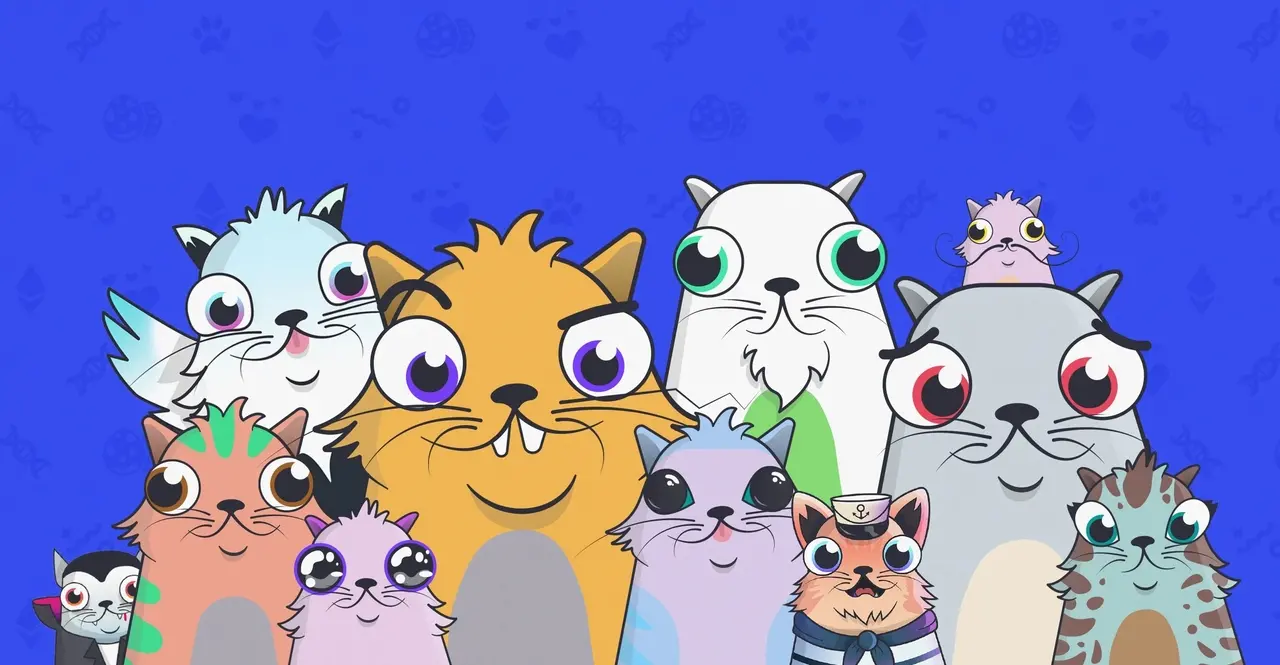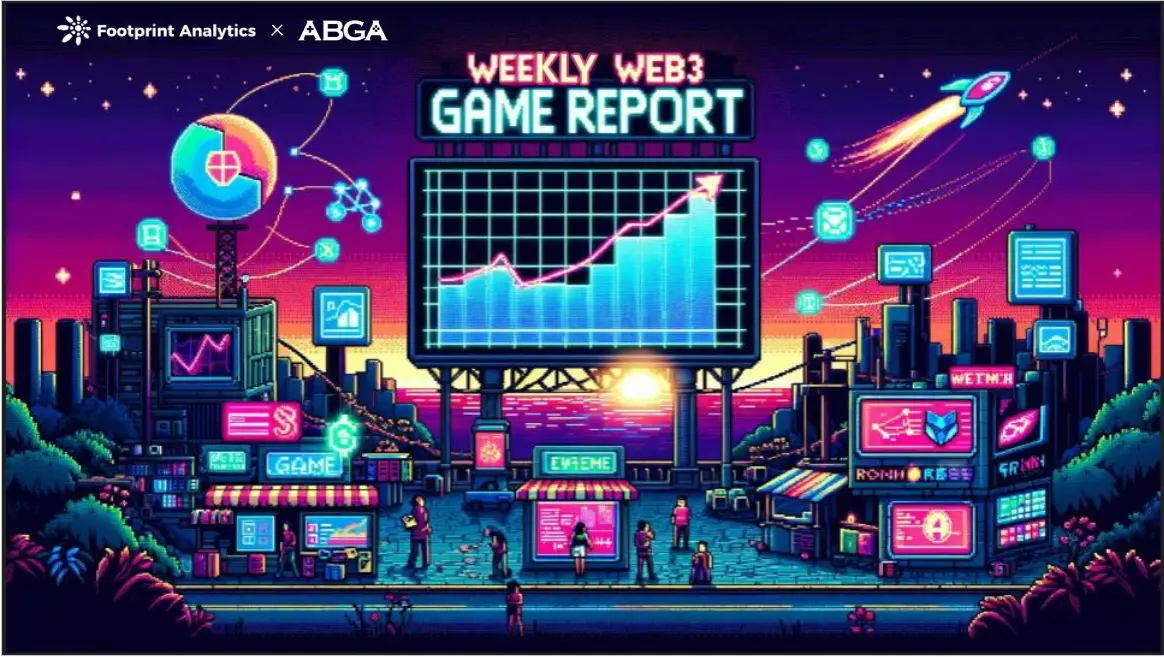Why Invest in Catizen: A Brief Discussion on the Scarcity of Catizen Under the TG Investment Paradox
Author: kirin_alen d/acc
In less than three months, Catizen has surpassed 23 million users, with nearly 3.5 million DAU, and has accumulated over 16 million dollars in in-game purchase revenue. Among them, the Telegram Premium user community has over 2 million members, meaning that 40% of Telegram members are Catizen users. Additionally, there are 1.5 million on-chain users and over 550,000 paying users, with an ARPU of 30 dollars. They have also announced plans to launch a game center.
Coincidentally, with Ton launching on Binance, this article will review why we chose to support Catizen at the end of 2022 and why we continue to be optimistic about Catizen in today's TG ecosystem.
Back in 2022, when we decided to invest in the Catizen team, it was completely unexpected. At that time, FTX had collapsed, and the industry was at its lowest point. Besides having confidence in the prices of Bitcoin and Ethereum, there was no concept of which projects could succeed in the next wave. The vague judgment was that the stories of NFTs and the Metaverse in 2021 had already brought Crypto into the mainstream, with many traditional institutions and celebrities starting to engage, but the experiences were not pleasant. If the next cycle has a new Mass Adoption model, it at least needs to be verified as more replicable to allow these people and new entrants to re-enter.
"We like incremental growth and want to bring the IAA+IAP mini-program monetization model into the crypto space."
This was the idea the Catizen team discussed during their first conversation about the project. At that time, they already had experience in GameFi, and for a team that originally focused on traditional traffic games, pure PVP GameFi games lacked prospects. In the team's view, combining IAA+IAP (in-game ad monetization and in-app purchases) with crypto cashback is more exciting than making money through Ponzi schemes, and it allows the team to leverage their experience in traditional traffic growth and their reserve of mini-games—"We feel that we should try to bring the games to our home ground."
"Mini-program games are like short videos in the gaming version, both satisfying the fast-paced lifestyle needs of modern people."
I had a sense of this at the time because the bear market was boring, and I often scrolled through Bilibili and Douyin, frequently seeing ads for mini-program games (I recommend "Pea Battle," a match-3 tower defense game). As a console player, I wouldn't normally play these, but the game materials were so appealing that I would inevitably click on these mini-games during sleepless nights and spend a first recharge of 68, or watch ads to pass levels. Then I would play for a week or two before deleting it, only to play another one later, almost like a cycle of addiction. I had an intuitive sense of the addictive nature and monetization potential of mini-program games.

I've played almost all of them; the games are average but engaging.

Rapidly growing mini-games
Recently, I looked at a report from dataeyes, and just one year later, by 2023, the revenue from domestic mini-program games has reached 20 billion yuan, with expectations to exceed 60 billion yuan this year, marking a 300% growth in one year. According to Tencent data, the monthly active users of mini-program games have exceeded 500 million, with an average online duration of about one hour per day, and the overall 14-day retention rate exceeds 50%. User habits are being formed, and mini-program games are entering their "iPhone moment" this year. Meanwhile, the overall gaming market is experiencing a lack of user growth, making mini-games the only hope for breaking through in the "stock game era" in China. The situation of seeking incremental growth in the stock era is quite similar to that in the crypto space.
Currently, domestic mini-programs are also evolving, becoming more intensive and diversified, with monetization models becoming more mixed. The value of mini-program games is still increasing. As for mini-games going overseas, they reached 470 million dollars in the first half of 2024, still in the exploratory initial stage, with significant room for development.
However, taking mini-program games overseas is not that simple. The main reason is that domestically, there is a natural traffic source and launcher in WeChat mini-programs, while there is no such environment overseas. The predecessor of PWA mini-programs has not gained traction due to issues like the "Apple tax," until friend.tech became popular and re-entered the spotlight. (On a side note, I recommend trying Ton.place, a PWA version of OnlyFans, which offers a good user experience.)
Regarding this, the team has also come up with a solution.
"We want to go All In on the Telegram ecosystem."
At the beginning of 2023, the team believed that the answer to "mini-program games + going overseas + crypto" was TG, which is the easiest platform to benchmark against WeChat overseas, and the team is willing to imitate WeChat for commercialization attempts while also understanding crypto and having a massive user base.
However, at that time, the infrastructure of Telegram and Ton was not mature, and they were still in the stage of trying out commercialization. Unlike now, where it has become a prominent source of incremental growth in the crypto space, making this decision and sticking to it was not as easy as it seems now. To better communicate and integrate with the TG team, the team even took the time to learn about Russian culture and the Russian language. The first wave of traffic dividends in the TG ecosystem was backed by unseen persistence and effort.
"Why choose to make a cat?" "Because I am a cat slave." "…"
Looking back now, the initial investment in Catizen seemed to rely more on mystical factors. I intuitively recognized the addictive nature and incremental potential of mini-games, believed in the market growth space of the IAA+IAP mixed monetization model, thought that combining with TG could yield good results, and understood and recognized the team's past successful experience in traffic buying games and resources within the industry, as well as their ambition for success in the crypto space.
If the initial investment was more about chance and mystical factors, seeing the flourishing of TG mini-programs today gives me more certainty about Catizen's future.
The former is vaguely correct, while the latter eliminates incorrect answers.
The Paradox of Investing in the TG Ecosystem
1. The roles of TG and Ton are decoupled; projects need to seize the TG traffic dividend period.
Unlike SOL, what we need is the 900 million potential users on TG to bring incremental users to the crypto space, not Ton's users. Long before the Ton ecosystem became popular, trading bots like maestro, unibot, bananagun, and pepeboost, which relied on TG channels, were making a fortune by meeting the on-chain quick trading needs of users, operating directly with custodial wallets. They meet the needs of Web3 users, and if project parties can find products that meet Web2 user needs, then the roles of TG and Ton wallets are simply traffic and payment channels, without the need for complex smart contracts, making business simpler.
Considering that TG is currently just trying out commercialization during its traffic dividend period, overseas users have not yet been exposed to the penetration of domestic mini-program games (which are still highly developing), and there are inherent limitations with MiniApp's H5. Initially, the quality of MiniApps was low, and the competition among Tap-like projects was severely homogenized, which was foreseeable. However, the future development of MiniApps towards diversification and intensification is also an inevitable trend. At this stage, seizing the TG traffic dividend is key; once captured, products can be iterated gradually. Moreover, products should be developed from a more "user-friendly" perspective rather than competing on traditional game quality.
2. TG MiniApp is more like a small business, suitable for entrepreneurship but not for investment.
Traditional crypto projects focus on a narrative + infrastructure, with the saying "If you want to get rich, first build the road" being common. After raising rounds from VCs and building one overpass after another, they find no real demand, turning into "ghost towns." The essence of issuing tokens actually belongs to a form of bad asset disposal akin to local debt-to-equity swaps, merely treated as high-potential assets under the addition of narrative.
However, Telegram comes with its own infrastructure and residents, now allowing for open recruitment, letting people open small restaurants, milk tea shops, massage parlors, and other entertainment facilities to make money. Early entrants that meet residents' basic needs in niche categories can benefit from traffic dividends as long as they don't perform poorly, and those that do well can even become wealthy. But this is more akin to small businesses; just because the owners can make money doesn't mean it's a good investment target.
From an investable perspective, the current low-threshold status of TG MiniApps means that if a MiniApp team has mastered the traffic monetization secrets on TG, they can continue to make money without needing to raise funds. Moreover, considering the exit pressure after financing, such as regulatory issues, the need to elevate the narrative ceiling for token issuance, and the subsequent price maintenance, community management, and other issues, there should be no shortage of founders wanting to quietly amass wealth. If, under such a low-threshold entrepreneurial background, the team has not yet mastered TG's traffic secrets, their attractiveness to investors is also insufficient. This is a distinction caused by the low cost of falsification compared to traditional crypto infrastructure projects. At the investment stage, it is easy to face indifference towards those that haven't succeeded, while those that have either don't need financing or are in a state of inflated valuations.
From an exit perspective, traditional token issuance exits in the TG-MiniApp track are less favorable than revenue sharing or dividend exit models.
Token issuance exits, as mentioned earlier, involve the willingness of founders, as well as issues related to narrative ceilings and business models (most listed consumer companies earn from supply chains and franchises).
In contrast, revenue sharing or dividend exits in the crypto space also face practical considerations with legal constraints on execution.
In fact, TG-MiniApp is quite similar to the NFT era, where there are no significant barriers to entry, and the competition is about community operation and sales capabilities. Those who can sell well gain the "right to continue narrative financing," while those who can't sell face low costs. However, for investors, unless selling small images involves profit-sharing, by the time it reaches an investable state, the valuation is often high, and very few projects can rely on token issuance for exits. Most are in a state of making noise without actual profits.
However, TG MiniApp is better than PFP in that PFP is a one-time transaction and not easily reissued, while TG MiniApp can potentially generate continuous in-app purchase revenue. Yet, in the weak constraint environment of crypto, there are still issues regarding how to ensure that revenue and dividends can be distributed.
Thus, for capable teams, TG MiniApp is a low-threshold track suitable for actively developing and acquiring real users and revenue, but for investors, it is akin to memes for retail investors, primarily relying on luck. It is suitable for entrepreneurship but not for investment.
Does this mean that TG is entirely unsuitable for investment? In my view:
The investment paradox of TG actually proves the scarcity of Catizen.
Overall, using the above logic in reverse, to invest in projects on TG, teams need:
1. Basic capabilities: The team must achieve PMF, find the fit between TG channels and applications, and successfully onboard users.
These basic capabilities can ensure that the project has the potential to survive or make money.
2. The team must have the ability and willingness to share profits and issue tokens.
Regarding the previously mentioned difficulties in executing profit-sharing, if the founders are willing to share profits while also willing to issue tokens, or vice versa, then combining token issuance to confirm revenue on-chain and using smart contracts to execute profit-sharing can resolve the dilemma.
3. The ability to upgrade and fulfill narratives and business models.
The randomness and homogenization of MiniApp success mean that if the team wants to issue tokens, they need to upgrade the narrative and business model and have the ability to fulfill them.
The narratives corresponding to mini-games are nothing more than: 1) gaming platforms (self-developed or published); 2) game public chains. This is a legacy of GameFi, which has already become relatively aesthetically fatigued. The root cause lies in the lack of continuous supply of quality games. Without the ability to supply quality games, the core issue remains that the channels for mass adoption have not opened up, leading to time-consuming and labor-intensive self-developed games, while lacking bargaining power for signing quality games. Fortunately, TG has opened up channel ports, making the story of gaming platforms feasible. It depends on whether the team can continuously discover quality games and have the ability to publish them. Finding good games and selling them at good prices is where Chinese teams have a natural advantage.
And the above points are precisely what Catizen can fulfill:
Catizen has already proven its product development, community operation, and traffic monetization capabilities on TG with data. In less than three months, the user count has exceeded 23 million, with nearly 3.5 million DAU, and has accumulated over 16 million dollars in in-game purchase revenue, with 1.5 million on-chain users and over 550,000 paying users, achieving an ARPU of 30 dollars;
The team has publicly stated that they will airdrop and will continue to empower in the future;
The team has publicly stated that they will launch a gaming platform and already has a reserve of 200 mini-games, many of which have mature games with over 100 million downloads on WeChat and Google Play, thanks to the Catizen team's background in gaming and their experience in mini-games and TG operations, enabling them to better fulfill the "bridge" role and become the most successful gaming platform on TG. Additionally, the team has a wealth of short drama resources, with short drama platforms and e-commerce platforms under development.
Conclusion:
Cats are really cute!










